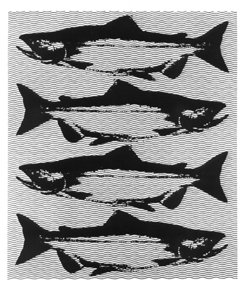Research Revision
A revised research plan will improve knowledge about how fish use habitat, the impacts of predators, climate change, and other critical issues to help the Council direct future project funding.
- June 15, 2017
- John Harrison

This month the Council approved a revision of the plan that guides research undertaken through the Columbia River Basin Fish and Wildlife Program. The research plan identifies “critical uncertainties” that the Council believes must be investigated and better understood in order to define projects that implement the Program, understand how they are performing, and report on the status and trends of focal species – those that define the health of ecosystems -- and their habitats.
Among the critical uncertainties identified in the Program are the effects of climate change on fish and wildlife habitat; the impacts of contaminants on water quality and fish and wildlife; the effects of hatchery fish on the environment where they are released and on wild fish in the same habitats; research about how fish use various habitats, including freshwater and in the estuary; impacts of harvest on salmon in the Columbia River Basin; impacts of hydropower dam passage on juvenile and adult salmon; monitoring and evaluation methods including the use of fish tags; and the abundance of non-native and predator fish and their impacts on other species.
With more than $250 million spent annually on projects that implement the Council’s Fish and Wildlife Program, scientific research is critical to improve knowledge and help guide decision-making. The Council’s revision of the research plan, last updated in 2006, was based largely on the advice of its two panels of independent scientists, the Independent Scientific Review Panel (ISRP) and the Independent Scientific Advisory Board (ISAB).
With more than $250 million spent annually on projects that implement the Council’s Fish and Wildlife Program, scientific research is critical to improve knowledge and help guide decision-making. The Council’s revision of the research plan, last updated in 2006, was based largely on the advice of its two panels of independent scientists, the Independent Scientific Review Panel (ISRP) and the Independent Scientific Advisory Board (ISAB). The plan identifies 14 areas for future research including (not in priority order) fish habitat in Columbia River tributaries; fish habitat in the mainstem Columbia and Snake rivers; fish hatcheries; river flows and dam passage impacts on fish; and the Columbia River estuary, near-shore freshwater plume in the ocean, and the ocean farther off shore.



